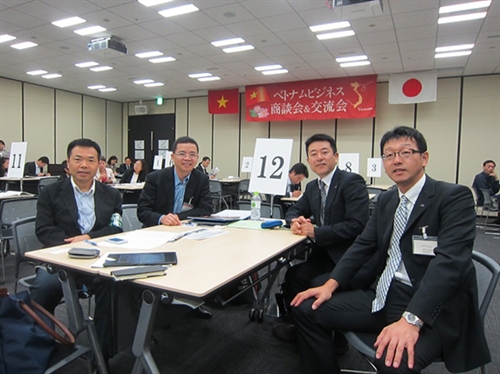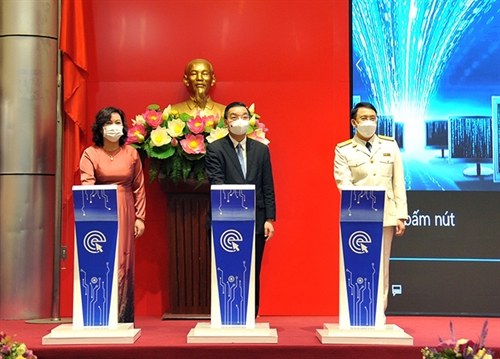What forms of labor discipline can enterprises apply to their employees in accordance with the current labor law?
Labor discipline is defined by the current labor law as requirements on compliance (by employees) with law-provided rules on time, technology and production and business administration in internal labor regulations issued by employers[2]. When an employee violates the labor discipline, his/her employer may apply one of the following four forms of labor discipline:
- Reprimand: This is the lightest disciplinary measure. Acts of violation to be subject to this form of discipline will be specified in internal labor regulations;
- Deferment of salary/wage increment for up to six months: Depending on his/her violation, the employee may be subject to the extension of the regular salary/wage rise period compared to the period as agreed upon by the employee and his/her employer in the labor contract. However, the extension must not exceed six months;
- Removal from office: Usually, only employees who hold specific working positions may be subject to this form of discipline. Acts of violation sanctionable by this measure will be specified in internal labor regulations; and,
- Dismissal: This is the severest form of discipline applicable to employees who violate internal labor regulations. Article 125 of the 2019 Labor Code (the Code) specifies acts of violation for which this measure will be applied.
The Code lays four fundamental principles for application of labor discipline, specifically as follows:
- The employer is able to prove the fault of the employee;
- The grassroots-level employees’ representative organization of which the concerned employee is a member must participate in handling the employee’s violation;
- The employee must be physically present and may defend himself/herself or ask a lawyer or the employees’ representative organization to defend him/her; if the employee is under full 15 years old, he/she must be accompanied by his/her at-law representative (a parent or an individual legal representative);
- The handling of the employee’s violation must be recorded in a minutes.
When taking disciplinary action, the employer may not impose more than one disciplinary measure for one violation of internal labor regulations. Where an employee simultaneously commits more than one violation of internal labor regulations, he/she shall be subjected to the heaviest disciplinary measure for the most serious violation[3].
In fact, not any employee who violates internal labor regulations will be subjected to labor discipline. No disciplinary measure will be imposed on an employee who is:
- Taking sickness or convalescence leave, or a leave with the employer’s consent;
- Kept in custody or temporary detention;
- Awaiting results of investigation and verification and conclusion of a competent agency for his/her act of violation specified in Clause 1 or 2, Article 125 of this Code[4];
- Pregnant, or on maternity leave or raising a child aged under 12 months.
- Suffering mental illness or another disease that deprives him/her of ability to control his/her actions[5].
What legal issues should enterprises note in order to ensure the lawfulness of their labor discipline?
There are some legal issues that employers should note in order to ensure that labor discipline is lawfully applied, thus avoiding the possibility of being determined by the court as illegal when a dispute arises between an employee and his/her employer.
Firstly, there should be a labor contract between the employee and employer in accordance with the Code for the reason that labor discipline is governed by the Code and only applies to labor relations under labor contracts. Some other cases involving the relationship under a working contract between an employer that is a public non-business unit and a public employee are governed by the Law on Public Employees, so disciplinary action will be determined in accordance with this Law.
Secondly, the violation of labor discipline committed by the employee must be specified in internal labor regulations together with the form of labor discipline to be imposed for such violation. During the working process, an employee may commit many breaches of internal rules, but not all of them are treated as violations of labor discipline. As per Article 127.3 of the Code, the employer may only apply labor discipline for acts specified in internal labor regulations or for offenses that are determined by the labor law as violations of labor discipline.
Thirdly, the disciplinary action must comply with labor discipline measures under Article 122 of the Code and must be grounded on the law and registered labor internal regulations as well as provided evidence.
Fourthly, there is a statute of limitations for taking disciplinary action against violations of labor discipline and the employer is required to issue a decision on application of a form of labor discipline within this time limit. The time limit for taking a disciplinary measure against a violation of internal labor regulations is six months from the date of occurrence of the violation or 12 months in case the violation is directly related to finance, assets or disclosure of technological or business secrets or 60 days in some special cases as specified in the Code.
Fifthly, the decision on disciplinary action must be issued and signed according to the competence of the person in charge of labor discipline. As per Article 18.3 of the Code, the person competent to apply disciplinary measures is also competent to enter into labor contracts on the employer’s behalf or another person specified in the internal labor regulations.
Sixthly, labor discipline shall be applied according to the law-specified order and procedures[6] mentioned below:
- Step 1: The employer makes a minutes of violation upon detecting that an employee has committed a violation of labor discipline and informs the at-law representative of the employee in case he/she is under 15 years old.
- Step 2: The employer establishes a disciplinary committee and sends a notice to the disciplinary hearing to participants at least five working days before the projected date of the hearing.
- Step 3: After receiving the notice, the at-law representative of the employee and the employee shall confirm the time and place of the disciplinary hearing with the employer. In case it is impossible to attend the disciplinary hearing according to the notice, the employee and the employer may agree to change the time and place of the hearing. In case no agreement is reached, the employer shall decide on the time and place of the disciplinary hearing.
- Step 4: If the employee and trade union representative fail to confirm their attendance at, or are likely to be absent from, the disciplinary hearing, the employer shall still hold such hearing. At the hearing, the employer will have to clearly determine the violation of labor discipline and prove the fault of the employee.
- Step 5: The hearing panel drafts and ratifies the disciplinary hearing’s minutes and collects signatures of the hearing attendees, including signatures of the employee and trade union representative. In case any person refuses to sign the minutes, the minutes taker shall specify his/her full name and reason for such refusal.
- Step 6: The employer issues a disciplinary decision and sends it to the mandatory hearing attendees.
What legal consequences may occur in case an enterprise illegally applies labor discipline?
Legal consequences of the unlawful application of labor discipline may arise in four cases. First, the employer must accept the employee back to work under the signed labor contract insurance and pay salary and social insurance and health insurance premiums for the days the employee is not allowed to work with at least two months’ salary under the labor contract (compensation). Second, in case the employee does not wish to continue working for the employer, in addition to the compensation, the employer will have to pay a severance allowance. Third, if the employer does not wish to reinstate the employee and the employee agrees, in addition to the compensation, the employer will have to pay an additional amount of money to the employee according to the agreement between the two parties, which must be at least equal to two months’ salary under the signed labor contract. Fourth, in case the position or job agreed upon in the labor contract is no longer vacant and the employee still wishes to work for the employer, the two parties shall agree to modify the contract[7].-
[1] The article is prepared by Asia Legal.[2] Article 117 of the Code.[3] Article 122.1 of the Code.[4] Theft, embezzlement, gambling, intentional infliction of injury, use of drugs at the workplace, disclosure of business secrets or technological secrets, infringement of intellectual property rights of the employer, act causing serious damage or threatening to cause particularly serious damage to the employer’s assets or interests, or sexual harassment at the workplace as specified in internal working regulations.[5] Articles 122.4 and 122.5 of the Code.[6] Article 70 of Government Decree 145/2020/ND-CP guiding a number of articles of the Labor Code regarding labor conditions and labor relationships.[7] Article 41 of the Code and Article 73.2 of Decree 145/2020/ND-CP.









